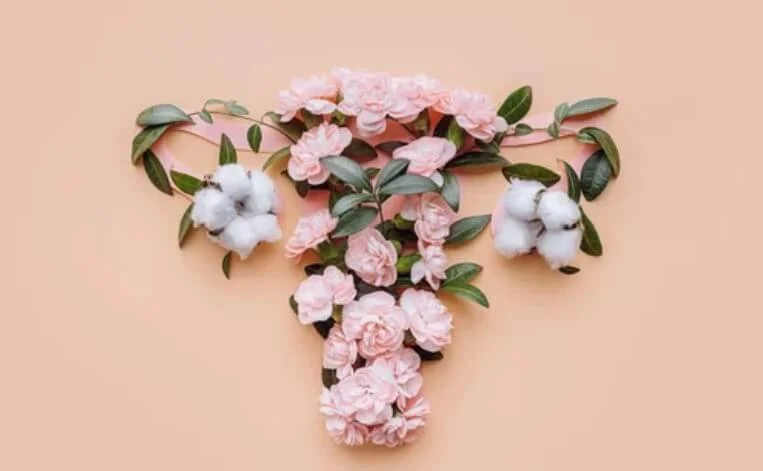Shatavari for Menopause: An Ayurvedic Guide to Relief and Hormonal Balance
Menopause is a natural transition in a woman's life, marked by changes in hormone levels and the cessation of menstruation. Research (Usharani Pingali et al., 2025) indicates that many postmenopausal women experience a range of changes during this time. For many women this can be a challenging shift as they manage their wellbeing. While hormone replacement therapy (HRT) is an option for some, many women explore natural approaches to support their wellbeing during menopause. Shatavari, a revered Ayurvedic herb, has been traditionally used to promote women's overall wellbeing throughout all stages of life. But what exactly is Shatavari, and how might it contribute to wellbeing during menopause and beyond?
What is Shatavari?
Shatavari (Asparagus racemosus) is a climbing plant native to India, commonly used in Ayurvedic medicine for centuries (Panchal et al., 2022). Commonly known as the "Queen of herbs" in Ayurvedic tradition (Gogte, 2000). The name Shatavari translates to "she who possesses a hundred husbands," alluding to its traditional association with female reproductive health and hormonal wellbeing. The root of the plant is the part most commonly used for medicinal purposes (Salve et al., 2024) and contains many chemical constituents, such as saponins and flavonoids, which contributes to its medicinal properties (Akhtar et al., 2024).
Asparagus racemosus (Shatavari)
Queen of Herbs supporting women’s health.
How Shatavari Works: An Ayurvedic Perspective
In Ayurveda, menopause is known as Rajonivrutti. Acharya Sushruta and other sources mention the age of 50 as typical for this stage. Menopause is described as associated with a Vata imbalance, which is related to movement and change in the body. A decline in estrogen during menopause is linked to changes such as insomnia, anxiety, urinary symptoms, and osteoporotic changes attributed to Vata. Symptoms associated with Pitta, including hot flushes, skin inflammation, itchiness, and irritability, can also occur during this period (Kanwar et al., 2023). Hence, Shatavari is believed to have a balancing effect on Vata and Pitta doshas due to its sweet and bitter tastes and its cooling energy. Specifically, Shatavari's rasa or taste is sweet and bitter, with a guna, or qualities, that is heavy and unctuous. Finally, vipaka, or post digestive effect, is sweet. These qualities help to ground and nourish Vata and cool and calm Pitta.
Shatavari and Menopause: Supporting Wellbeing
Research suggests that Shatavari may play a role in supporting aspects of wellbeing during menopause:
Vasomotor Wellbeing: Studies (Gudise et al., 2024; Yadav et al., 2025) suggest that Shatavari may contribute to a sense of comfort and ease during times when hot flashes and night sweats are experienced. This may be related to its influence on Pitta dosha.
Hormonal Wellbeing: Research (Yadav, P. et al., 2025) suggests that Shatavari extract may contribute to hormonal wellbeing in perimenopausal women.
Mood and Sleep: Shatavari may contribute to a more positive mood, reduce feelings of unease, and support restful sleep during menopause (Gudise et al., 2024; Akhtar et al., 2024).
Vascular and Bone Wellbeing: Research indicates that Shatavari may support vascular function and contribute to bone health (Usharani Pingali et al., 2025).
Shatavari for Menopause
Possible relief for some common symptoms.
Beyond Menopause: Additional Benefits of Shatavari
While Shatavari is well-known for its benefits during menopause, it also offers a range of other health benefits for women of all ages:
Reproductive Wellbeing: Shatavari is traditionally used to support many aspects of reproductive wellbeing, including regular menstrual cycles (Kurdukar & Jogdand, 2021; Panchal et al., 2022)."
Lactation Support: Shatavari is a well-known galactagogue, meaning it helps to promote breast milk production in lactating mothers (Kurdukar & Jogdand, 2021; Panchal et al., 2022).
Digestive Wellbeing: Shatavari may help to soothe the digestive system, reduce discomfort, and support regular bowel movements (Kurdukar & Jogdand, 2021; Akhtar et al., 2024).
Antioxidant Power: Shatavari is rich in antioxidants, which help to protect the body against free radical damage and premature aging (Akhtar et al., 2024: Salve et al., 2024).
Anti-Inflammatory Support: Shatavari may offer anti-inflammatory support (Akhtar et al., 2024; Salve et al., 2024).
Overall Well-being: Emerging evidence suggests that Shatavari may improve overall well-being and quality of life in women (Usharani Pingali et al., 2025; Yadav et al., 2025; Panchal et al., 2022).
Shatavari Tea
Using Shatavari powder. Start with a low dosage.
Safety and Side Effects
Shatavari is generally considered safe for most individuals when used appropriately. However, it's important to follow these guidelines:
Start with a Low Dose: Begin with a low dose and gradually increase as needed.
Consult a Practitioner: If you have any underlying health conditions or are taking medications, consult with a qualified healthcare professional before using Shatavari.
Potential Side Effects: Some individuals may experience mild side effects such as bloating, gas, or allergic reactions (Kurdukar & Jogdand, 2021).
Contraindications: Shatavari is not recommended for women with estrogen-sensitive conditions such as estrogen-dependent cancers (breast, uterine and ovarian cancers), endometriosis, fibroids, premenstrual dysphoric disorder (PMDD), or polycystic ovarian syndrome (PCOS).
Alert: Shatavari has diuretic effects. Pregnant or breastfeeding women should not use it until more research is done and it is proven to be safe.
How to Use Shatavari
Shatavari is available in various forms, including powders, tablets, capsules, and liquid extracts. The appropriate dosage and form will depend on your individual needs and health goals. It's best to consult with a qualified Ayurvedic practitioner or healthcare provider to determine the right approach for you. It is important to use a high quality Shatavari with certified organic, and sustainable practices.
Unlock the Power of Shatavari with REVIVE Ayurveda
If you are seeking support during perimenopause or menopause, book a consultation today and explore how Shatavari might contribute to your overall wellbeing! Take advantage of a complimentary consultation with our Ayurveda practitioner.
Visit https://www.reviveayurveda.com.au/ayurvedic-program or call me at 0449 884 110 to schedule your appointment.
Written by Ann Pallis, Ayurvedic Practitioner in Ashburton, Melbourne.
Disclaimer: This blog post is for Ayurveda informational purposes only and does not constitute medical advice. This information is not intended for use in the diagnosis, treatment, cure or prevention of any disease. Please consult with a qualified healthcare professional before using Shatavari or any other herbal remedies.
REFERENCES
Usharani Pingali, Chandrasekhar Nutalapati, & Wang, Y. (2025). Ashwagandha and Shatavari Extracts Dose-Dependently Reduce Menopause Symptoms, Vascular Dysfunction, and Bone Resorption in Postmenopausal Women: A Randomized, Double-Blind, Placebo-Controlled Study. Journal of Menopausal Medicine, 31. https://doi.org/10.6118/jmm.24025
Yadav, P., Yadav, S., Sai Sarada Vedururu, & Kumari, G. (2025). A Standardized Asparagus Racemosus Root Extract Improves Hormonal Balance and Menstrual Health and Reduces Vasomotor Symptoms in Perimenopausal Women: A Randomized, Double-Blind, Placebo-Controlled Study. Journal of the American Nutrition Association, 1–11. https://doi.org/10.1080/27697061.2025.2510474
Akhtar, S., Gupta, A. K., Naik, B., Kumar, V., Ranjan, R., Jha, A. K., Rather, M. A., & Rustagi, S. (2024). Exploring pharmacological properties and food applications of Asparagus racemosus (Shatavari). Food Chemistry Advances, 4, 100689. https://doi.org/10.1016/j.focha.2024.100689
Panchal, C., Dhumal, S., & Patil, S. (2022). A Comprehensive Review on: Shatavari (Asparagus racemosus) Introduction. 7(8), 2456–4184. https://www.ijnrd.org/papers/IJNRD2208012.pdf
Gudise, V. S., Dasari, M. P., & Kuricheti, S. S. K. (2024). Efficacy and Safety of Shatavari Root Extract for the Management of Menopausal Symptoms: A Double-Blind, Multicenter, Randomized Controlled Trial. Cureus, 16(4). https://doi.org/10.7759/cureus.57879
Kurdukar, A., & Jogdand, S. (2021). Brief Review on Shatavari (Asparagus racemosus) and Its Medicinal Uses. Journal of Pharmaceutical Research International, 1552–1559. https://doi.org/10.9734/jpri/2021/v33i60b34778
Kanwar, J., Sushmita Rajpurohit, & Sanoor Bano. (2023). Menopausal Syndrome - Ayurvedic Review. Journal of Ayurveda and Integrated Medical Sciences, 8(8), 190–195. https://doi.org/10.21760/jaims.8.8.29
Salve, R., Daud, R., Wadhave, A., & Pathare, S. (2024). “Shatavari in Traditional and Modern Medicine: A Review of Its Applications.” International Journal of Pharmaceutical Research and Applications, 9, 1749. https://doi.org/10.35629/4494-090417491754
Gogte, V. M. (2000). Ayurvedic pharmacology and therapeutic uses of medicinal plants (Dravyagunavigyan), Bharatiya Vidya Bhavan (SPARC). Mumbai: Mumbai Publications.[Google Scholar].



